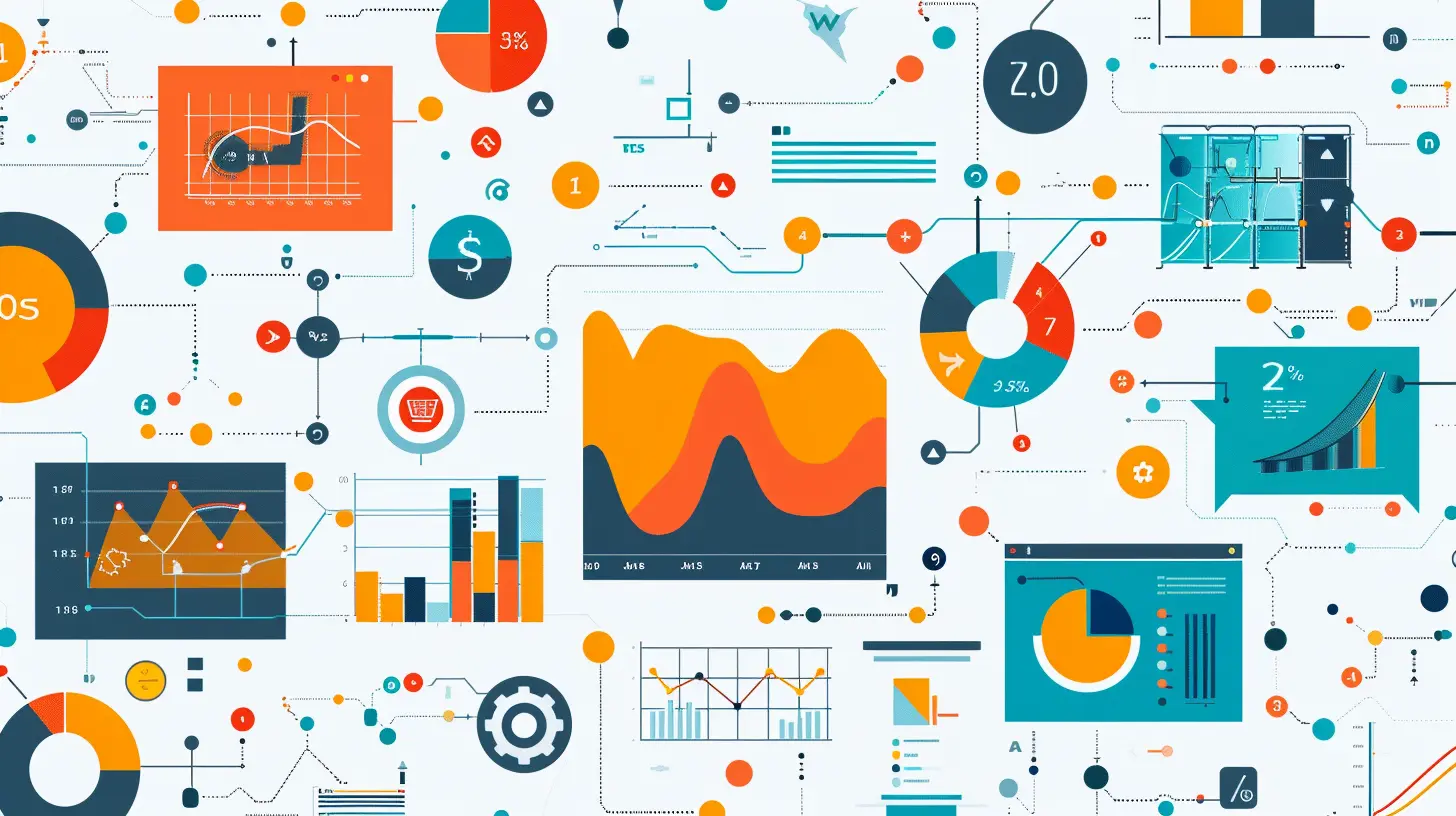The Role of Data Analytics in Making Smart Scaling Decisions
4 November 2025
Let’s face it—scaling a business is kind of like hosting a dinner party. You don’t want to start cooking for fifty guests when only five are showing up, but you also don’t want to be caught serving snacks when a crowd arrives hungry. So, how do you make that call? How do you know when and how to scale your business?
That’s where data analytics swoops in like a superhero with a spreadsheet cape.
In today’s business world, gut feelings alone just don’t cut it. To grow smart—not just fast—businesses turn to data. And not just any old numbers, but the kind of insightful, well-organized, and actionable data that analytics can serve up on a silver platter.
In this article, we’re diving deep into the wonderful, number-crunching world of data analytics and how it plays a starring role in making smart scaling decisions for your business. Buckle up, because things are about to get insightfully entertaining.
What Is Data Analytics, Really?
Alright, before we dive too deep, let’s get on the same page. What the heck is data analytics?At its core, data analytics is the process of collecting, cleaning, analyzing, and interpreting data to make better decisions. Think of it as using a GPS instead of guessing your way through an unfamiliar city. It tells you where you are, where you're going, and the best route to get there—complete with traffic reports and coffee pit stops.
Data analytics isn’t just for the mega-corporations with teams of analysts and oceans of data. Whether you’re a small coffee shop or a rapidly growing tech startup, you can use it to make decisions that are grounded in reality, not wishful thinking.
Why Scaling Is a Big Deal—and a Big Risk
Scaling a business sounds exciting (and it is!), but it’s also risky. You’re investing more money, time, and resources with the hope that the payoff will be worth it. But if your assumptions are wrong? You could be left with piles of inventory, staff you can’t afford, or worse—burned-out teams and drained bank accounts.It’s a high-stakes game. Scaling too soon or too fast can tank your business. Scaling too late can let competitors swoop in and steal your thunder.
That’s why you need something better than a hunch. You need a crystal ball. Spoiler alert: your crystal ball is called data analytics.
So, How Exactly Does Data Analytics Help With Scaling?
Great question! Data analytics plays a key role in answering questions like:- Is there enough demand for my product or service to justify expansion?
- Which markets or customer segments should I target next?
- How are my operations performing, and where can we become more efficient?
- What are my customers actually saying, and how do they behave?
- How do my financials really look—and can I afford to scale?
Let’s break down how data analytics helps at each step of the scaling journey.
1. Understanding Market Demand
You wouldn’t open a second bakery location without knowing whether there are enough sweet-toothed customers nearby. Data analytics looks at current sales trends, customer behaviors, seasonality, search queries, and even social media buzz to gauge demand.By analyzing past purchase patterns, web traffic, and customer interest, you get a clearer picture of where the demand is coming from—and whether it’s strong enough to support your next big move.
👉 Key Tip: Use tools like Google Trends, CRM analytics, and keyword data to spot demand spikes and emerging trends.
2. Identifying Your Best Customers
Not all customers are created equal. Some are loyal, high-spending rockstars. Others? Well, let’s just say they’re more effort than they’re worth.Data analytics can segment your customer base into neat little buckets—by location, spending habits, lifetime value, referral frequency, and more. You’ll know which customer types drive the most revenue and how to find more of them.
When you’re scaling, this info is gold. Focus your marketing and expansion strategies on your most profitable audiences and skip the dead weight.
👉 Key Tip: Use customer segmentation tools and predictive modeling to forecast the profitability of new markets or products.
3. Optimizing Operational Efficiency
Before you scale, your internal processes need to be humming along smoothly. Imagine trying to double your output with a clunky system that’s already at its breaking point. That’s a recipe for chaos.Data analytics tracks your operations in real time—from supply chain performance to employee productivity. It highlights bottlenecks, waste, and inefficiencies you might not even see.
With that data, you can fix what’s broken, streamline processes, automate repetitive tasks, and ensure your foundation is rock-solid before you scale.
👉 Key Tip: Implement dashboards and KPIs (key performance indicators) to monitor operations daily.
4. Smarter Financial Forecasting
Let’s be real: scaling costs money. Lots of it. You’re hiring people, buying equipment, boosting marketing, and maybe even leasing a new office. If you don’t know your numbers, you’re operating blind.Data analytics gives you a crystal-clear view of your:
- Cash flow
- Profit margins
- Break-even points
- Cost of customer acquisition
- Return on investment (ROI)
This helps you forecast whether you can afford to scale and when the right time is. You’ll also be able to model different scenarios to see how changes could impact your bottom line.
👉 Key Tip: Use financial modeling tools and historical datasets to build realistic growth plans—not fantasy ones.
5. Monitoring Customer Feedback in Real Time
Customer feedback is like free consulting—if you’re paying attention.Data analytics tools can scan reviews, surveys, support tickets, and even social media comments to spot trends in what people are saying about your product or service.
Are you hearing the same complaints again and again? Are customers begging you to open a location in another city? You’ll be able to make data-backed decisions about scaling directions based on actual demand and sentiment, not assumptions.
👉 Key Tip: Integrate sentiment analysis and natural language processing (NLP) tools into your customer support systems.
6. Predicting Future Trends
Want to be ahead of the curve rather than always reacting to it? Data analytics helps you spot future trends before they explode.Advanced analytics, predictive modeling, and machine learning can forecast:
- Market trends
- Customer behavior shifts
- Inventory needs
- Peak sales periods
This kind of foresight is invaluable when you’re planning the next phase of growth. It’s like having tomorrow’s newspaper today.
👉 Key Tip: Use past data and machine learning tools to simulate “what-if” scenarios and test the risk level of new ventures.
Real-Life Example: Netflix and Their Data-Powered Scaling Strategy
Let’s look at a real-world example—our binge-worthy friend, Netflix. They didn’t just guess that streaming would be the future. They knew it, thanks to data.Netflix uses data analytics to determine:
- What content gets the most engagement
- What genres and actors are trending
- What regions are craving more content
- When users pause or stop watching
Armed with this treasure trove of data, they scaled from DVDs by mail to dominating the global streaming market and creating original content that people actually want to watch. That’s not luck—that’s smart scaling with data.
Common Mistakes to Avoid When Using Data for Scaling
Data is powerful, but it’s easy to misuse it. Watch out for these common traps:❌ Drowning in Data, Starving for Insight
Collecting data without knowing what to do with it is like collecting ingredients but having no recipe.❌ Ignoring Qualitative Data
Numbers are amazing, but don’t ignore customer stories, reviews, and insights that don’t show up on a graph.❌ Misreading the Metrics
Correlation doesn’t always mean causation! Make sure your conclusions are actually backed by logic and proper context.❌ Overcomplicating Things
Too much complexity can slow you down. Keep your dashboards concise and focused on the metrics that matter most.Tools That Can Help You Scale with Data
There’s a treasure trove of tools out there to help you gather and analyze the data you need.Here are a few popular options:
- Google Analytics – For website traffic and user behavior
- Tableau or Power BI – For visual data dashboards
- Crazy Egg or Hotjar – For heatmaps and user interaction
- HubSpot or Salesforce – For CRM and customer behavior
- QuickBooks or Xero – For financial data tracking
- SurveyMonkey or Typeform – For collecting customer feedback
You don’t need to be a data scientist to use these tools—just curious and willing to learn.
The Bottom Line: Make Scaling Smarter, Not Harder
Scaling a business is exciting, terrifying, and full of potential. But flying blind is no way to grow. With data analytics in your toolkit, you’re not guessing—you’re knowing.You’ll spot opportunities before they dry up, cut out inefficiencies before they become bottlenecks, and tailor your growth strategies to match the real needs and behaviors of your customers.
Think of data as your wise old business partner—always crunching the numbers, reading the signs, and keeping your scaling journey on track.
So next time you're weighing whether to grow your team, launch a new product, or open a second location, don’t just throw a dart.
Ask your data. It’s got answers.
all images in this post were generated using AI tools
Category:
Scaling BusinessAuthor:

Matthew Scott
Discussion
rate this article
1 comments
Elias Curry
Great insights! Remember, leveraging data analytics is like having a treasure map—guiding you to smart scaling decisions. Keep exploring, and success will follow! 🚀📊
November 8, 2025 at 4:11 AM

Matthew Scott
Thank you! Absolutely, data analytics is essential for navigating growth effectively. Excited to see where this journey takes us! 🚀


